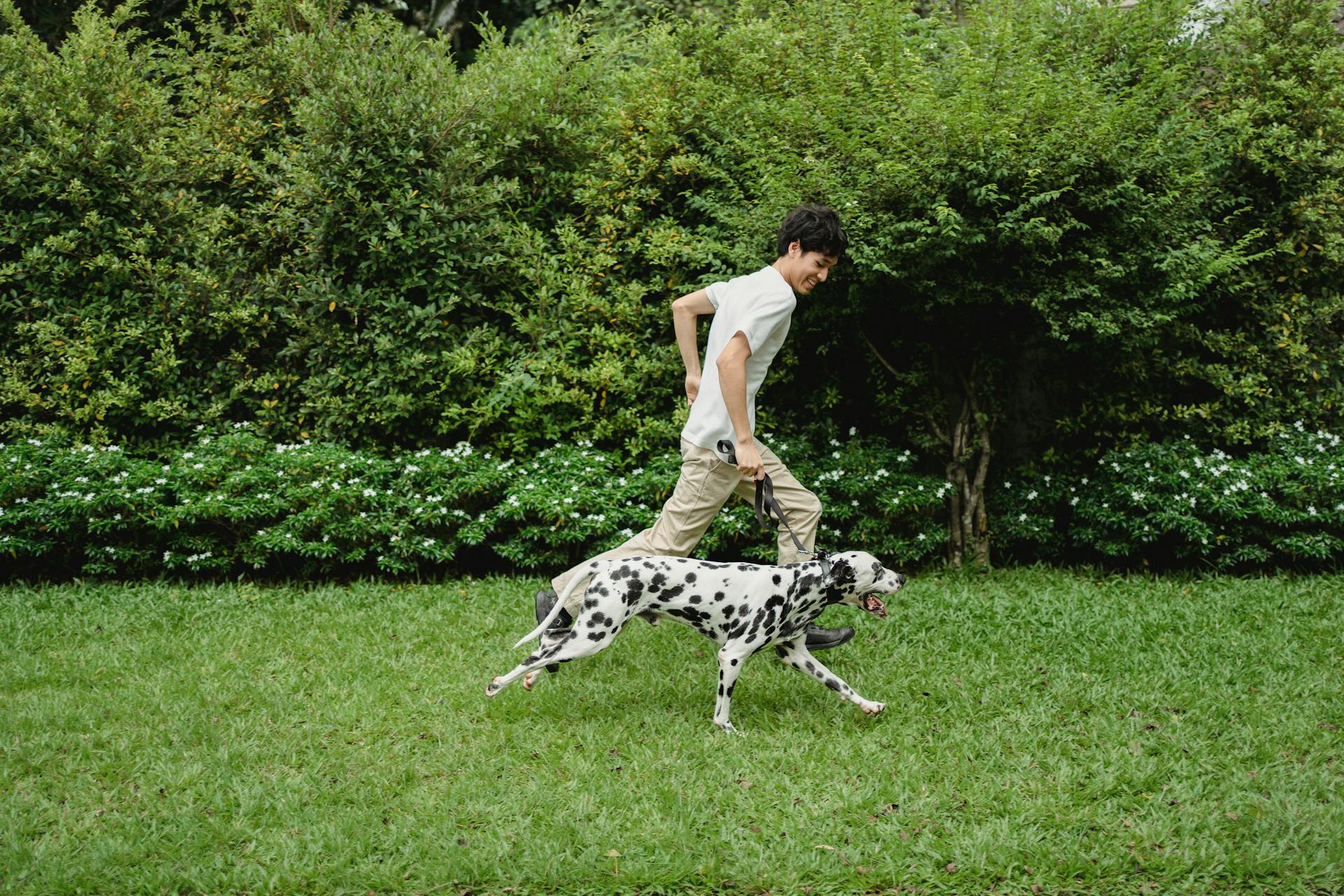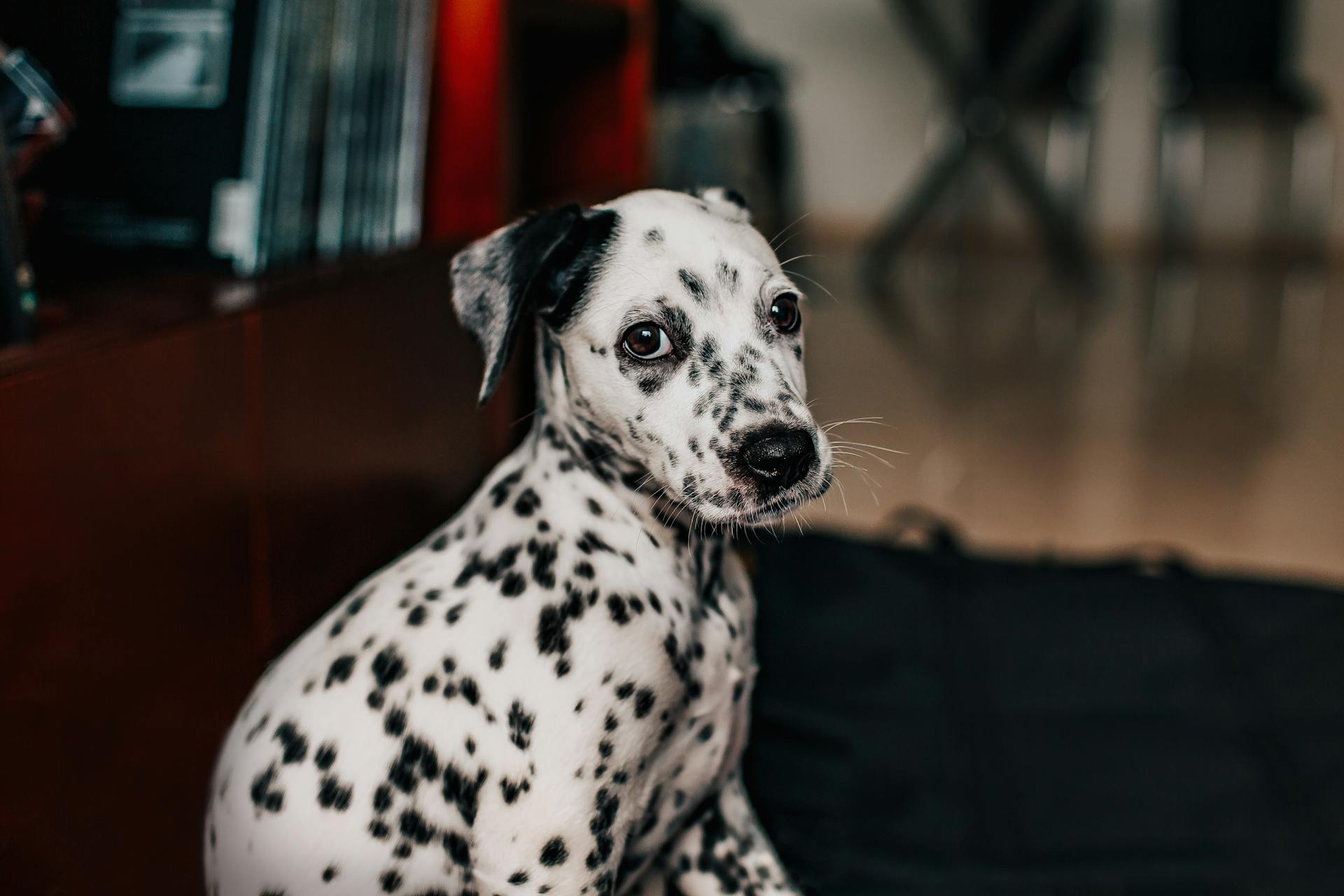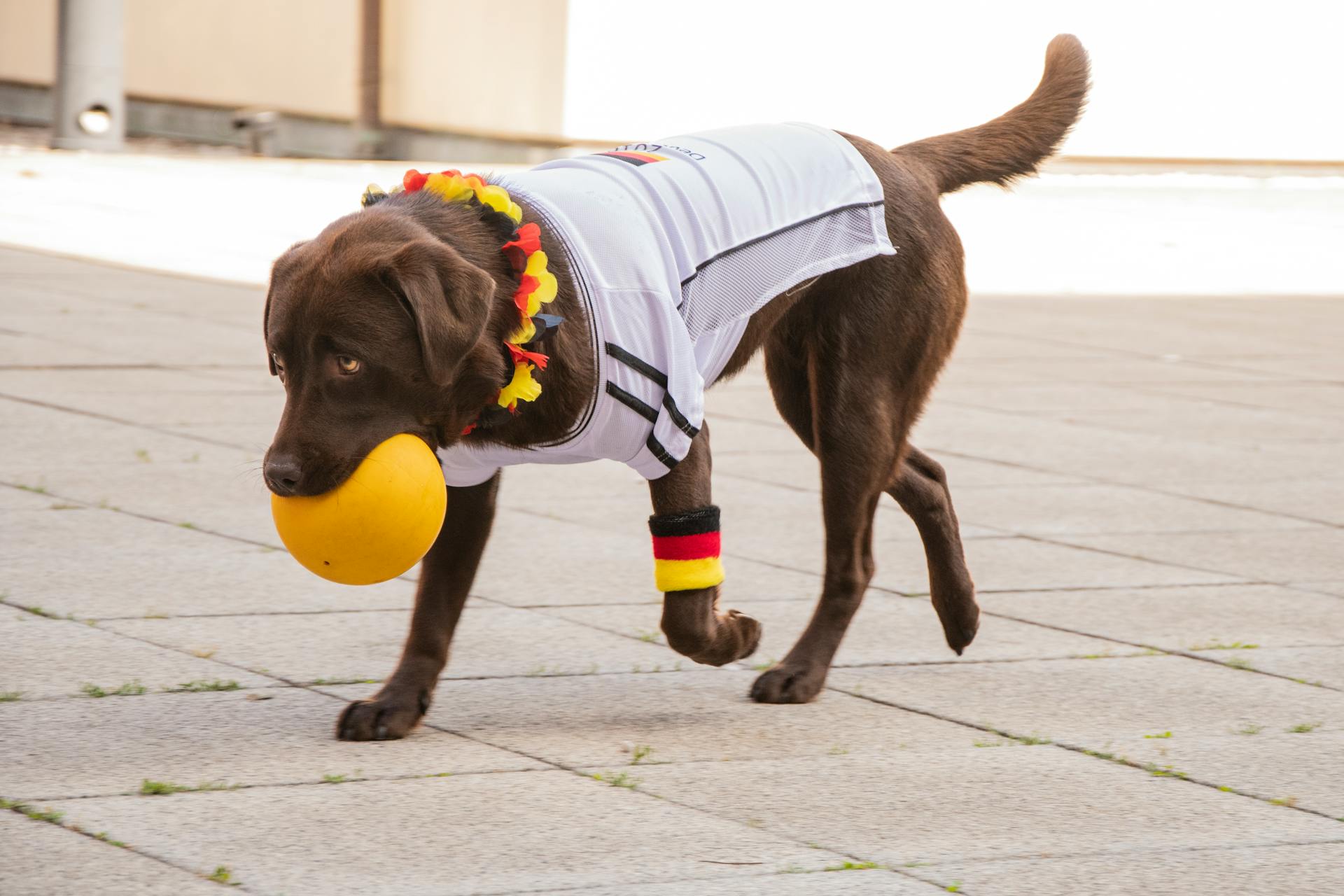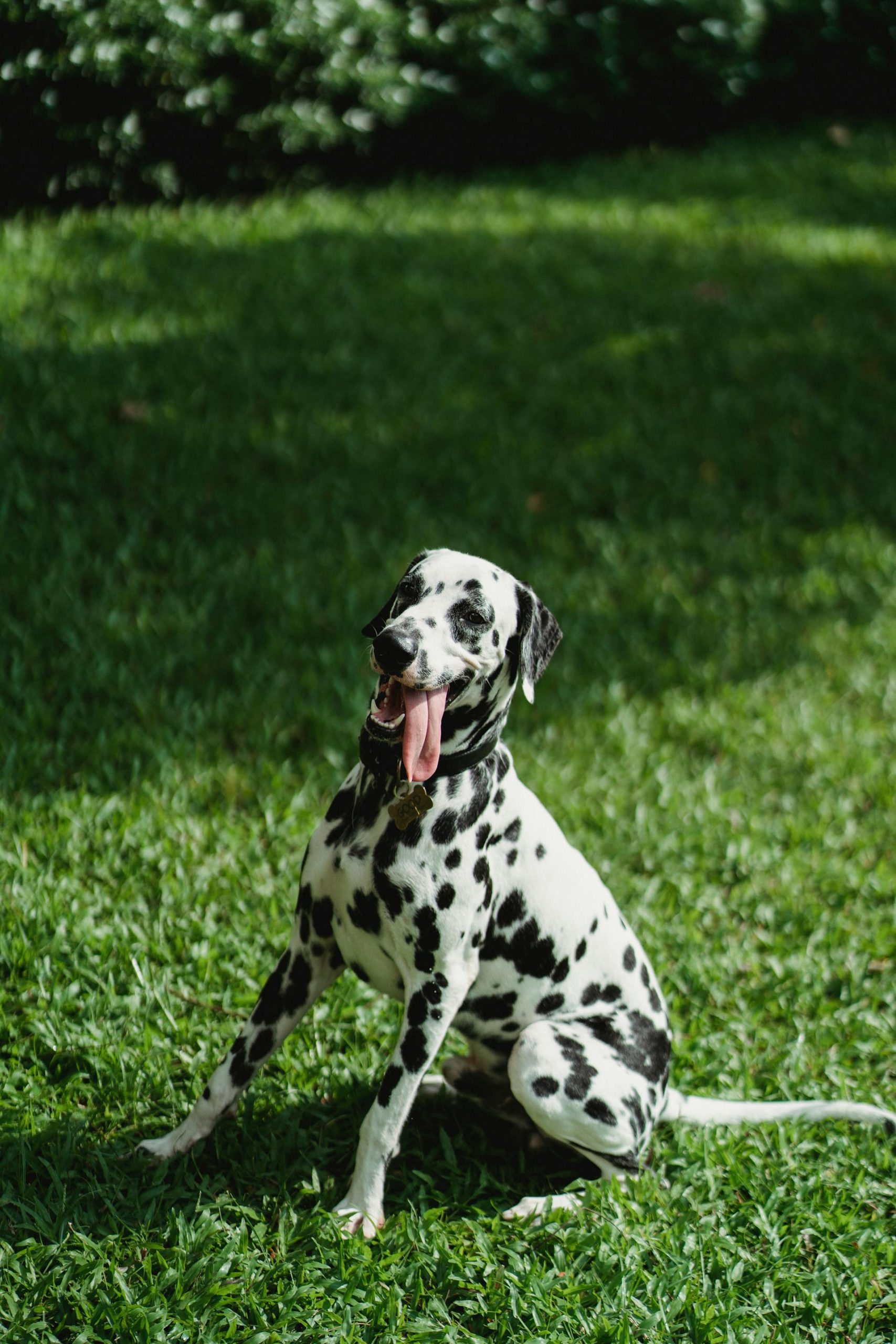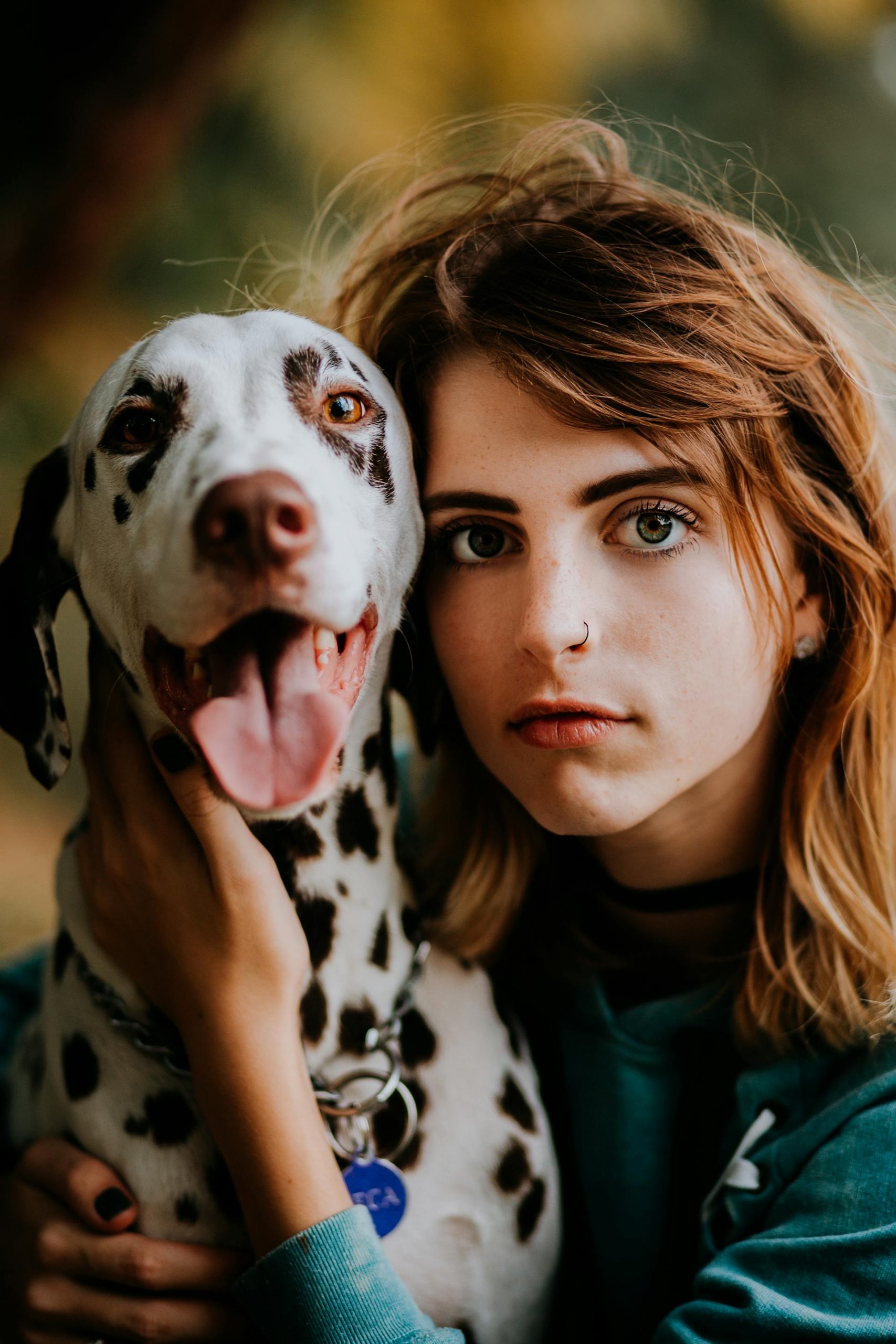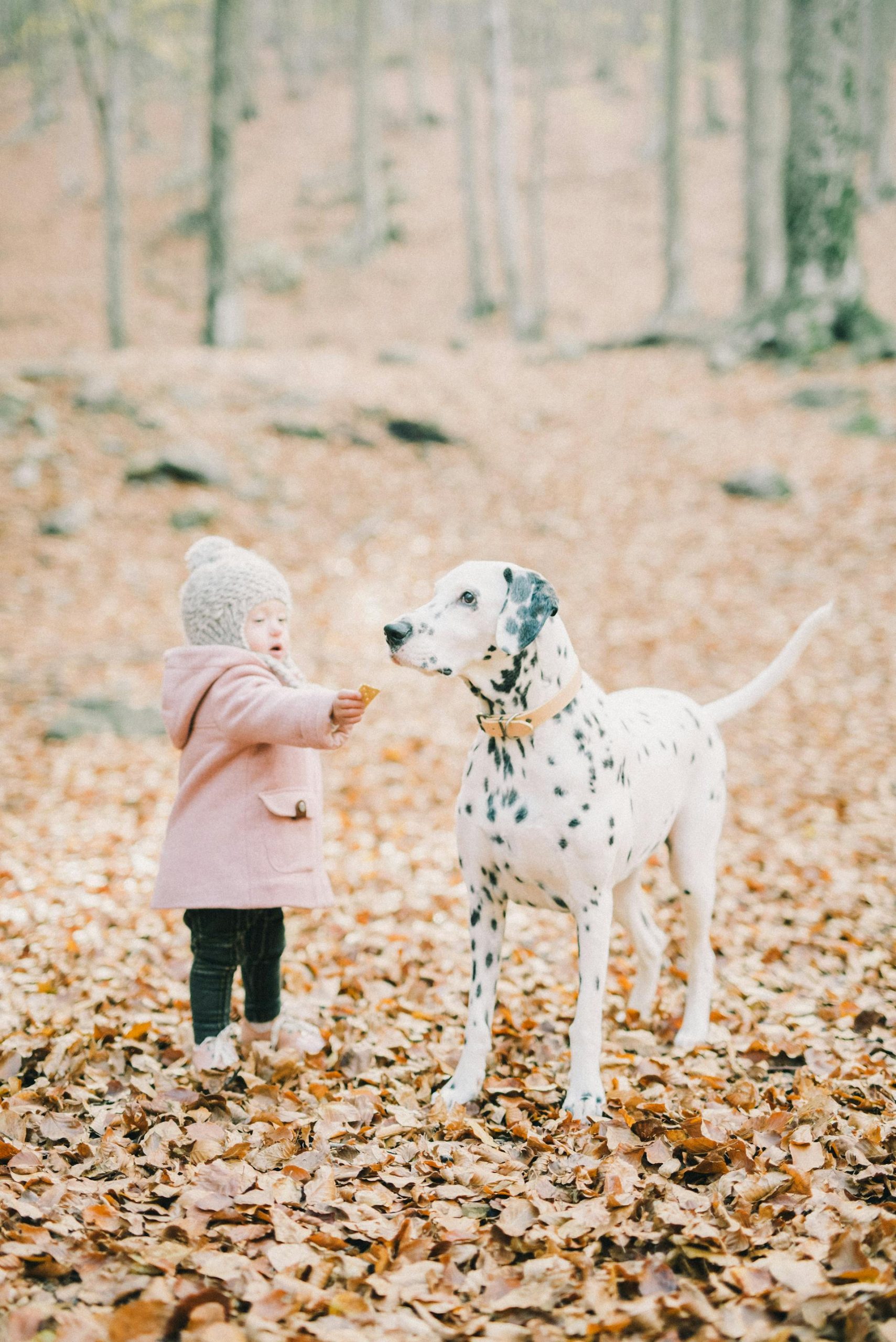When considering adding a new furry member to the family, the dilemma of choosing the right breed can be quite overwhelming.
Among the vast array of dog breeds, the charming Dalmatian with its distinctive spotted coat and the affable Labrador Retriever, known for its friendly demeanor, stand out as popular choices for family pets.
Each breed brings its own history, physical traits, and unique characteristics to the table. The Dalmatian, historically a carriage dog, is now admired for its energetic and playful nature.
On the other hand, the Labrador, originally a helper to Canadian fishermen, has become a beloved companion worldwide due to its intelligence and outgoing nature.
Both the Dalmatian and the Labrador are sizable popular dog breeds that share a common need for regular exercise, making them ideal for families that enjoy an active lifestyle.
Whilst they differ in appearance, with the Dalmatian flaunting a slim build and famous spots and the Labrador displaying a robust stature and solid coloration, they do share a similar love for being around their human families.
Deciphering the nuances between their temperaments, exercise needs, and overall maintenance can help prospective owners determine which breed might be the most suitable addition to their household dynamics. With that in mind, let’s take a look at the Dalmatian vs Labrador dog breed comparison.
Key Takeaways
- Dalmatians and Labradors are both active breeds with distinct histories and appearances.
- While Dalmatians are slender and spotted, Labradors are sturdy and come in solid colors.
- Choosing the right breed depends on understanding each breed’s exercise needs, temperament, and care requirements.
Breed Origins and History
Exploring the histories of the Dalmatian breed and the Labrador Retriever uncovers fascinating tales that reflect their unique characteristics and roles in society.
Dalmatian History
Dalmatians hold a special place in the hearts of many, with their distinct spotted coats sparking curiosity about their origins.
Though their exact history is a bit shrouded, they are named after the historical region of Dalmatia, which is today part of Croatia.
There’s agreement among historians that the breed has an ancient history, likely stemming from certain regions of Europe. Evidence suggests that Dalmatians served as status symbols and were used as carriage dogs. Their strong, muscular build underscores a history that called for endurance running alongside carriages.
Labrador Retriever History
Labradors, affectionately known as “Labs,” trace their roots to Newfoundland, which is now part of Canada.
Contrary to the name, they did not originate from Labrador but instead developed from the St John’s water dog, a breed used by fishermen to retrieve nets and fish.
In the 19th century, these dogs were brought to England where they caught the eye of aristocrats and were subsequently bred for sport and companionship.
Their friendly disposition, intelligence, and trainability are traits shaped by their history as both workers and companions. Recognized as a purebred in England, they have since been a beloved family dog worldwide.
Fun fact, nowadays, there are some breeders that make a difference between an American and English Lab. But there is no such thing. The American Kennel Club recognizes only the Labrador Retriever dog breed. Many people also make the mistake between a Golden Retriever and a Labrador Retriever breed.
Physical Characteristics
When deciding between a Dalmatian puppy and a Labrador Retriever, understanding their physical characteristics is crucial. They both have distinct features that set them apart from each other. Let’s take a closer look.
Dalmatian Appearance
The Dalmatian sports a slender build and is famed for its unique white coat adorned with black or brown spots.
While the spots are a hallmark of the breed, they’re not always present at birth; they usually develop within the first few weeks of life.
Dalmatians have a short, dense coat, which adds to their sleek appearance. In terms of size, Dalmatians are typically large, but not overly so, contributing to their athletic silhouette.
Labrador Retriever Appearance
Labrador Retrievers have a sturdy and large frame and possess a short, dense coat that comes typically in black, yellow, or chocolate colors.
Their friendly expressions and powerful build can almost instantly endear them to anyone. Labradors are slightly heavier than Dalmatians, weighing between 55 and 80 pounds, indicative of their strong and solid stature which is well-suited to their history as working dogs.
Personality and Temperament
Choosing between a Dalmatian vs Labrador Retriever puppy for your family involves understanding their distinct temperaments. They are warm-hearted breeds with unique personality traits that are essential to consider.
Dalmatian Temperament
Dalmatians are often described as energetic and playful, with a strong desire for companionship and activity.
They can be a bit independent and stubborn at times, which might require a firm and patient training approach.
It’s important to engage them with plenty of exercise and mental stimulation to keep their spirited nature content.
Dalmatians are very loyal to their families, but they might be wary around strangers, making socialization crucial from a young age.
Labrador Retriever Temperament
Labradors are renowned for their friendly and outgoing personalities.
They are incredibly affectionate and known for being gentle with children, making them an excellent choice for a family pet.
Consistently ranking as one of the most popular breeds, Labs possess a loving and sociable nature.
They are also highly intelligent and athletic, requiring a good deal of daily exercise.
Their playful disposition continues well into adulthood, which bonds them closely with family members of all ages.
Exercise and Activity Level
Choosing between a Dalmatian breed and a Labrador also means considering each breed’s need for exercise and activity. They’re both known for being quite active, sport-loving companions that need regular opportunities to vent their energy and do interesting things.
Dalmatian Exercise Needs
Dalmatians are a high-energy breed that thrive on vigorous exercise. They are athletic dogs that were originally bred to run, so they have an inbuilt love for running and engaging in activities that challenge their endurance.
Providing them with ample exercise is key to maintaining their physical and mental health. Activities should include:
- Running or jogging alongside their owner
- Engaging in canine sports such as agility or flyball
- Long walks with opportunities to explore new environments
Energy Level: Dalmatians have a well of deep energy reserves, making them suited for extended outdoor adventures and activities that stimulate both their body and mind.
Labrador Exercise Needs
Labradors, with their friendly and outgoing disposition, tend to be highly active and require a decent amount of exercise.
They benefit greatly from:
- Daily exercise routines like walking or fetching games
- Plenty of playtime, especially swim sessions, as they’re known for loving water
- Mental stimulation through training exercises or interactive play
Energy Level: Labradors have a strong propensity for staying active and share a love for activities that involve their families. They carry a zest for life that is channeled positively through regular exercise. Regular activity helps them maintain their cheerful nature without becoming restless.
Training and Socialization
When deciding on a family pet, understanding the intricacies of training and socialization is vital. Both Dalmatians and Labrador Retrievers shine as family companions with proper guidance, but they have different requirements and challenges that prospective owners should consider.
Dalmatian Training Challenges
Dalmatian dogs are intelligent, active dogs that thrive with consistent dog training. They can be strong-willed, so it’s important to maintain a firm and patient hand during training sessions.
Since they have a protective streak, they benefit immensely from early socialization with people and other dogs to develop into well-adjusted adults.
Families should be prepared to invest time in socializing a Dalmatian, especially around children, to cultivate good behavior.
- Patience Needed: Dalmatians may test boundaries, requiring a steady and persistent approach.
- Consistency Is Key: Regular training schedules help reinforce desired behaviors.
Labrador Retriever Trainability
Labradors are synonymous with trainability and obedience. They respond very well to positive reinforcement, especially if treats are involved, due to their food-driven nature.
Labs are known for their friendly disposition and eagerness to please, which makes them excellent family pets that can easily adapt to living with children.
Socialization comes naturally for most Labradors, but they still benefit from early exposure to varied environments and situations.
- Reward-Based Training: Encourages their natural desire to please.
- Family Friendly: Labs typically love social interaction and play well with kids.
Health and Lifespan
When selecting a furry companion, prospective pet parents should consider health and longevity. Dalmatians and Labradors have breed-specific health challenges and life expectancies, highlighting the importance of understanding these aspects before making a decision.
Common Dalmatian Health Issues
The Dalmatian is a breed known not only for its distinctive spotted coat but also for its specific health conditions.
Deafness is a significant concern in Dalmatians, with many puppies born with varying degrees of hearing loss. An owner’s vigilance and early testing are crucial for management.
Another familiar sight in Dalmatians is hip dysplasia, a genetic condition that affects the hip joint and may lead to discomfort or reduced mobility.
Skin allergies can also be troublesome for these spotted pals, possibly causing irritation and requiring attentive care to manage.
A severe condition that Dalmatians may face is urinary stones, due to their unique urinary tract systems that process waste differently, which means a careful diet is essential.
- Deafness: Genetic predisposition; may affect one or both ears
- Hip Dysplasia: Inherited; leads to arthritis or lameness
- Skin Allergies: Can cause discomfort; requires maintenance
Labrador Retriever Health Overview
Labrador Retrievers, lovingly known as Labs, are prone to certain health conditions too. They can suffer from hip and elbow dysplasia, similar to the Dalmatian. It’s a hereditary condition that affects the joints and can lead to discomfort and decreased activity.
Labs are often prone to obesity, which can exacerbate these joint issues and lead to other health problems.
Progressive retinal atrophy, which leads to blindness, and cataracts are potential eye issues in Labs. Regular health checks can help catch these early on. Another concern for the Labrador Retriever is bloat, a rapid, life-threatening condition that requires immediate veterinary attention.
Anxiety, including separation anxiety, can also affect Labs if they are left alone for too long or do not receive adequate mental stimulation or exercise.
- Hip and Elbow Dysplasia: Canine orthopedic conditions; affecting mobility
- Obesity: Linked to feeding habits and exercise; preventable with proper care
- Eye Conditions (Cataracts, Progressive Retinal Atrophy): Can lead to vision loss
- Bloat: Quick onset; critical to get veterinary care
The lifespan of a Dalmatian usually ranges from 10 to 13 years, while Labrador Retrievers tend to have a slightly shorter lifespan of 10 to 12 years. Each breed can enjoy a full and happy life when their specific needs are met, including a balanced diet, regular exercise, and early detection and treatment of breed-specific health issues.
Grooming and Maintenance
When choosing between a Dalmatian and a Labrador, one should note that each breed has its unique grooming requirements. While both breeds are relatively easy to care for, their grooming routines differ, especially given their distinct coat types.
Caring for a Dalmatian
A Dalmatian’s coat is short and dense, sporting its distinguishing black or liver-colored spots. To keep their coat healthy, regular brushing is recommended to minimize shedding and distribute natural skin oils.
They might not need frequent trips to a professional groomer, but it’s important to maintain a consistent brushing schedule at home—about once or twice a week. This activity also helps to strengthen the bond between Dalmatians and their owners.
In terms of diet, Dalmatians benefit from well-balanced meals that suit their energetic lifestyle. Be mindful of their feeding routine, as a proper diet is critical to maintaining their shiny coat and overall health.
Labrador Grooming Routine
Labradors have short, double-layered, water-resistant coats that come in three standard colors: black, chocolate, and yellow.
They require routine grooming to keep their fur in good condition.
Regular brushing, at least once a week, will help manage shedding and keep their coat looking glossy. During shedding seasons in spring and fall, they may require more frequent grooming to keep loose fur under control.
Labradors have a hearty appetite and can easily become overweight if their diet isn’t managed carefully.
It’s important to provide them with a diet that supports their size and activity level, feeding them measure-controlled meals twice a day. Balanced nutrition is key in maintaining their robust physique and lustrous coat.
Choosing the Right Breed for You
When deciding between a Dalmatian and a Labrador Retriever, potential dog owners should consider the lifestyle requirements and suitability of each breed to find their ideal canine companion.
Dalmatian Lifestyle Requirements
Dalmatians are known for their distinctive spotted coats and high energy levels. They thrive in homes where they have plenty of space to run and explore, making them less ideal for apartment living.
This breed requires daily vigorous exercise to maintain physical and mental health, which is crucial for owners who lead an active lifestyle.
Dalmatians were historically used as coach dogs, so they possess a strong guarding instinct. They’re often vigilant and can be reserved with strangers, so socialization from an early age is essential to encourage a friendly temperament.
As a member of the non-sporting group, this purebred is quite independent, yet they bond closely with their families, making them great family dogs with proper training and socialization.
Labrador Retriever Suitability
Labrador Retrievers, part of the sporting group, are one of the most popular breeds for families, thanks to their amiable and friendly personality.
These dogs adapt well to a variety of living conditions, including apartments, as long as they get enough exercise to manage their moderate to high energy levels.
Labradors are famously friendly and outgoing; they are known to get along well with children and other animals, making them excellent family pets.
This breed is not typically known for guarding but is loyal and alert, which can be reassuring for owners.
When it comes to dog training, Labradors are eager to please and generally easy to train. They are often selected as assistance dogs.
The price of a purebred Labrador may vary, but generally, they are more wallet-friendly compared to some other breeds.
Labradors require regular exercise and mental stimulation to stay happy and healthy but are less demanding than Dalmatians in terms of energy expenditure.


